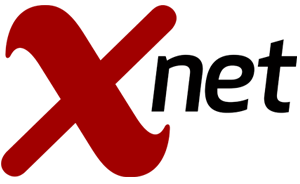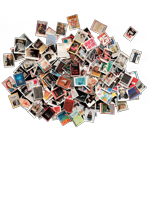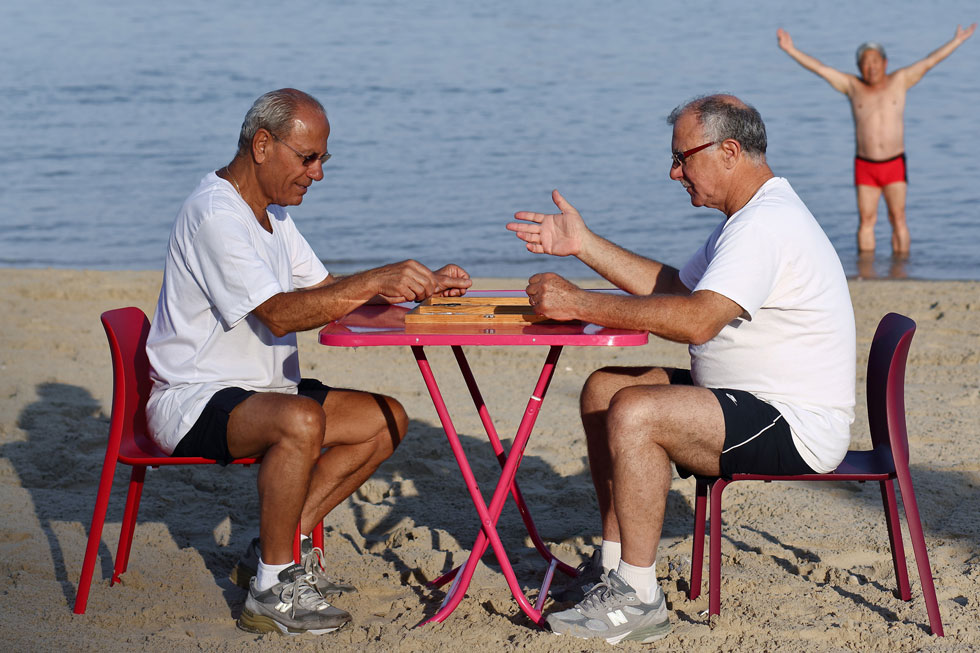The first Maccabiah approaches. Where? The new Maccabiah Stadium is completed just moments before the official Opening Ceremony, and Tel Aviv Mayor Meir Dizengoff leads 390 athletes from 18 countries in on his white stallion; the crowd applauds.
Massed gymnasts perform, fulfilling Yosef Yekutieli’s wildest dreams. So what if there’s no proper swimming pool in the entire country? Who needs one when we have the Mediterranean Sea? No budget, no resources? Jewish brains and the Maccabi spirit will find solutions …
Mandate Palestine 1929
Things aren’t easy, not only in the Promised Land; but everywhere else. The Great Depression is in full swing all over the world after Wall Street goes bust in 1929. Even in the U.S., millions of jobless and homeless people queue in breadlines and soup kitchens.
In Germany, millions of people are out of work, and the crazy Zionists are holding a Jewish Olympics? In Palestine? Go figure …
The First Maccabiah: 5692
March 28-April 6, 1932
A total of 390 Jewish athletes from 18 countries, including 60 from Arab countries of Syria and Egypt, participated in the First Maccabiah. The air was electric with anticipation; some American swimmers actually leapt off their ship and swam the last mile ashore.
At the Opening Ceremony in the dusty new Maccabi Stadium, 2,500 gymnasts put on an impressive mass display, the likes of which had never been seen in the country. The stadium, first of its kind in Eretz Israel and built on sand dunes near the north Tel Aviv coast between the mouth of the Yarkon River and the Mediterranean Sea, was completed literally on the eve of the Opening Ceremony.
Up to the last minute, carpenters worked and wagon convoys brought firm earth into the stadium that Yosef Yekutieli’s dream had conjured up in the Promised Land.
A famous photograph depicts Tel Aviv’s first mayor, Meir Dizengoff, mounted on a white stallion and leading a column of riders into the stadium. Led by Avraham Shapira, the renowned Shomer (guard) of Petach Tikva, swordsmen formed the Color Guard.
Legendary world Zionist leaders - Henrietta Szold, the “mother of youth aliyah,” Lord Melchett, Nachum Sokolov and the poet laureate of the Hebrew revival, Chaim Nachman Bialik - graced the dais, with the standards of the British Mandate and the City of Tel Aviv flying side by side.
The temper of the times was nevertheless present: to the consternation of the Palestine Police, before the parading delegations entered, leaflets demanding an end to British rule were mysteriously circulated among the crowd.
Tel Aviv in 1932 (population: 50,000) was the leading and ambitiously Zionist town of the Jewish Community in Eretz Yisrael (population: 180,000); the Maccabiah took place between two big events, the annual Purim “Adloyada” parade and the Levant Fair, a trade & agricultural show at the fairgrounds on the south bank of the Yarkon.
The participants’ processional was the first great highlight of the First Maccabiah; big, excited crowds flanked the roadsides through the town, especially from where the parade formed up near Herzliya Gymnasium school (site of the Azrieli Center towers).
It was as if all the children of Israel had converged in wonder upon the little metropolis.
The Austrian delegation carried Theodore Herzl’s flag, as described by the prophet of modern Israel in his book, "Der Judenstaat." The Bulgarian delegation famously brought its own brass band, and the U.S. delegation – although the smallest, with only 10 participants - were all world-class athletes. Besides delegations from Syria and Egypt, the Latvians surprised everyone by marching in their slick gym suits in place of the formal official uniform.
It was history in the making, and everyone felt it, as if the New Jew had suddenly filled the precincts of the dusty little town of Tel Aviv.
Tel Aviv and the towns of Rishon Lezion in the south and Ramat Gan in the east, opened their arms to the guests from Diaspora who arrived for the Games; competitors were housed in private homes, tents and even classrooms.
Several events were short of suitable equipment: there was no tip-top gymnasium; with only 500 seats and standing room for 15,000, the stadium could not accommodate all the crowds, huge beyond the organizers’ wildest dreams.
Nevertheless, the spirit of the event took over, and all events took place as scheduled in 16 disciplines:
- Athletics (track & field)
- Gymnastics
- Boxing
- Wrestling
- Fencing
- Tennis
- Table tennis
- Motorcycling
- Field hockey
- Handball
- Basketball
- Football (soccer)
- Swimming
- Water polo
- Diving
- Equestrian (horse) skills.
The railwaymen provided crushed coal cinders to prepare the running track. Gymnastics, boxing and wrestling and were held in the open on a wooden platform in Gan Rina, a public garden. Swimming and water polo competitions were held in the port waters of Haifa, in an area demarcated by lines of rowboats and buoys; spectators sat on rafts bobbing up and down in the water.
The 10,000 meters was run outside the stadium through the streets of Tel Aviv and along the seashore on a track that was 70 percent paved road and 30 percent sand.
The delegation from Poland - at that time before the Holocaust, with by far the largest organized Jewish community in the world - scored highest in the overall competitions (368 points). Austria came in second with 281, and the U.S. - with the best athletes - third at 272.
The hard-working Eretz Yisrael community placed fifth at 243.5 points.
Competitors and officials communicated by and large in Yiddish, sometimes in Hebrew and/or Ladino.
Registration was held, symbolically, in Immigrants Hall and Maccabiah headquarters was in the Allenby Hotel.
The Maccabiah budget was set at 3,500 Eretz Israel pounds; the first Maccabiah actually ran up a deficit of 1,038 Eretz Israel pounds, huge money in those days.
Posters (prized collectors’ items today) proclaimed the competitions an unmissable opportunity to see the great Jewish champions in action. And they were indeed great.
Hyman of the U.S. ran the 100 meters on the makeshift track in 11.2 seconds, only a second outside the world record. Kessler from Lvov was Poland’s national boxing champion. Hecht was the star of the Czechslovakian Davis Cup squad, and famous in Europe; the Gottesman brothers became the first local tennis stars in the Land of Israel.
Everyone came to see the strongmen and the tough guys, especially the superstar wrestlers - Chafetz from Egypt, the celebrated Miki Hershl of Vienna - the King of European Wrestling - and the Danes from Makkabi Kobenhavn, Kurland and Hermann Leizerovich.
While the first Maccabiah officially lasted only three days, it has resounded ever since through Jewish history. Everyone felt the surge of our history in these Games, from the 1,800th anniversary of Bar Kochba’s revolt against the Romans to the 50th anniversary of the Zionist aliya to Eretz Israel, the old and the new combining through the modern Maccabees into Herzl’s Jewish State in-the-making.
Adapted and reprinted with permission from Maccabiah17.com, official site of the 17th Maccabiah World Games


















